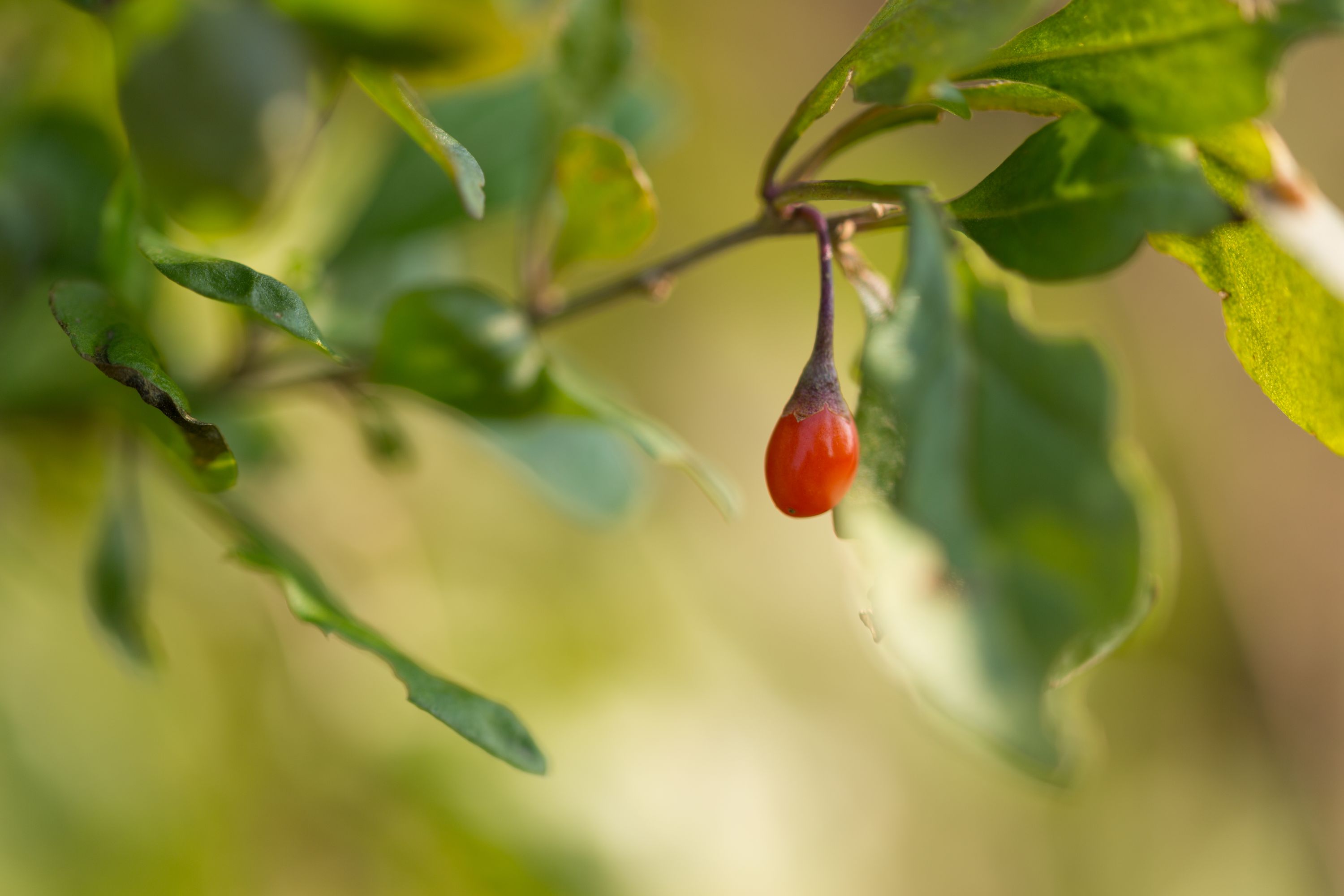Desert Thorn
(Lycium fremontii)

Description
Lycium fremontii is a species of flowering plant in the nightshade family, Solanaceae, that is native to northwestern Mexico and the southernmost mountains and deserts of California and Arizona in the United States. It often grows in areas with alkaline soils, such as alkali flats. Both its common name, Frémont's desert thorn, and its specific epithet, "fremontii", are derived from John C. Frémont.Lycium fremontii is a bushy, spreading shrub approaching a maximum height of 4 m (13 ft) with many thorny, leafy branches. The fleshy leaves are oval in shape and up to 2.5 cm (0.98 in) long. Parts of the plant are coated in glandular hairs. The inflorescence is a small cluster of tubular flowers roughly 1–2 cm (0.39–0.79 in) long including the cylindrical calyx of fleshy sepals at the base. The flower is light to deep purple with purple veining. The corolla is a narrow tube opening into usually five lobes. The fruit is a red berry 6–8 cm (2.4–3.1 in) wide. Lycium is a genus of flowering plants in the nightshade family, Solanaceae. The genus has a disjunct distribution around the globe, with species occurring on most continents in temperate and subtropical regions. South America has the most species, followed by North America and southern Africa. There are several scattered across Europe and Asia, and one is native to Australia. Common English names for plants of this genus include box-thorn and desert-thorn. There are about 70 to 80 species. The most common are Lycium barbarum and Lycium chinense, whose fruits (wolfberries or goji berries) are a traditional food crop in China. Lycium are shrubs, often thorny, growing 1 to 4 meters tall. The leaves are small, narrow, and fleshy, and are alternately arranged, sometimes in fascicles. Flowers are solitary or borne in clusters. The funnel-shaped or bell-shaped corolla is white, green, or purple in color. The fruit is a two-chambered, usually fleshy and juicy berry which can be red, orange, yellow, or black. It may have few seeds or many. Most Lycium have fleshy, red berries with over 10 seeds, but a few American taxa have hard fruits with two seeds. While most Lycium are monoecious, producing bisexual flowers with functional male and female parts, some species are gynodioecious, with some individuals bearing bisexual flowers and some producing functionally female flowers.
Taxonomic tree:







